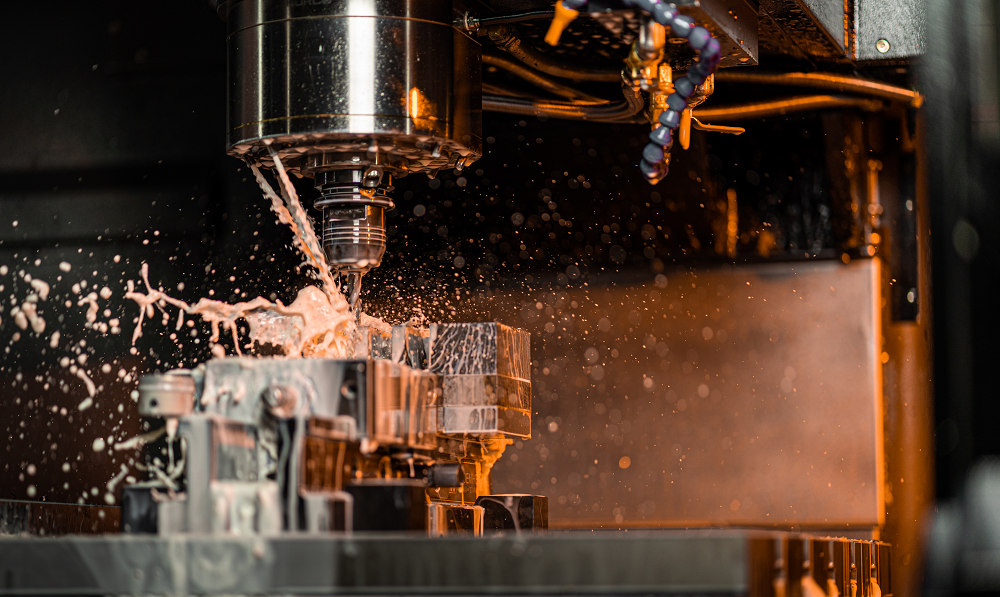Cutting fluids are a small line item in manufacturing, comprising less than 1% of the average operating budget. Many facilities try to save money by choosing coolants based on their upfront price, but this could actually create higher operating costs in the long run.
Cutting fluid performance has a significant impact on every aspect of a machine shops operation. Choosing a high-quality, advanced metalworking fluid over a low-cost option could create dramatic savings in productivity and a reduction in waste. You need to go deeper than the price per gallon and consider the total cost of ownership (TCO) when evaluating coolants.
How to Calculate the Total Cost of Ownership of Cutting Fluids
The total cost of ownership is a financial estimate that helps buyers assess both the direct and indirect costs of a purchase. In the manufacturing sector, businesses fulfill customer needs by completing a series of activities, all of which cost money and resources. Total cost of ownership is an attempt to measure the value of a product based on how it impacts these activities and resources. Fewer activities and lower resource consumption results in a lower total cost of ownership.
Advanced cutting fluids have a longer sump life and work at lower concentrations than conventional fluids and extend tool life. With reduced usage, longer tool life, and increased productivity, they offer a much lower total cost of ownership than fluids with lower upfront costs. Here’s how to calculate your cutting fluid’s TCO:
1. Understand Base Costs and Consumption Timelines
The base cost of fluid spend, and purchase price per gallon, of cutting fluid is self-evident. You can measure this by the price and number of gallons purchased in a given timeframe, but since the real value of advanced cutting fluids is more apparent over time, it makes more sense to measure TCO by year.
2. Calculate Hidden Costs
The hidden costs associated with cutting fluid ownership take a lot more time to calculate. You want to consider:
- Direct labor — The cost of workers that are directly involved in working with cutting fluids on the shop floor, as well as in purchasing, procurement, receiving, and overall lifecycle management.
- Additional supplies — Factor in the costs of tank-side additives to control fungus, bacteria, and foam and adjust pH.
- Auxiliary operations — Cutting fluids need maintenance to keep it performing optimally. Calculate the labor costs associated with a sump clean out or fluid recycling process. Take note of any loss of productivity resulting from machine downtime, the direct disposal costs of hauling expired fluid away, and the labor associated with prepping cutting fluid for disposal and refilling sumps with new coolant.
3. Calculate the Performance Leverage
The TCO of an advanced cutting fluid is best understood in comparison to a conventional cutting fluid. You also want to factor in indirect costs that are associated with cutting fluid performance, such as:
- Tool life — Advanced cutting fluids provide much higher lubricity and cooling ability throughout even the most intense operations, making cutting tools last much longer than usual.
- Throughput — Some fluids allow machines to run at higher feeds and speeds for higher production rates. Often these fluids reduce scrap as well.
- Labor efficiency — Advanced cutting fluid typically has higher worker acceptance and improves the operating environment. Labor efficiency also increases with less machine downtime from tool and fluid change outs.
Total Cost of Ownership: Putting It All Together
Advanced cutting fluids can cost more per gallon than conventional formulas, but their ability to lower costs in other areas can completely transform operations. The newest generation of coolants reduces waste, lowers carbon emissions and helps machine shops run at peak efficiency. In fact, one customer was able to use TRIM® MicroSol™ 585XT in their sump for two years at maximum performance before finally changing. Extending tool life also unleashes remarkable savings. One aerospace manufacturer was able to extend tool life by more than 200%, and save more than $69,900 per year with TRIM HyperSol 888NXT.
For help calculating your TCO and reaping the benefits of advanced cutting fluids, call +1 800-537-3365 or email us at [email protected].

